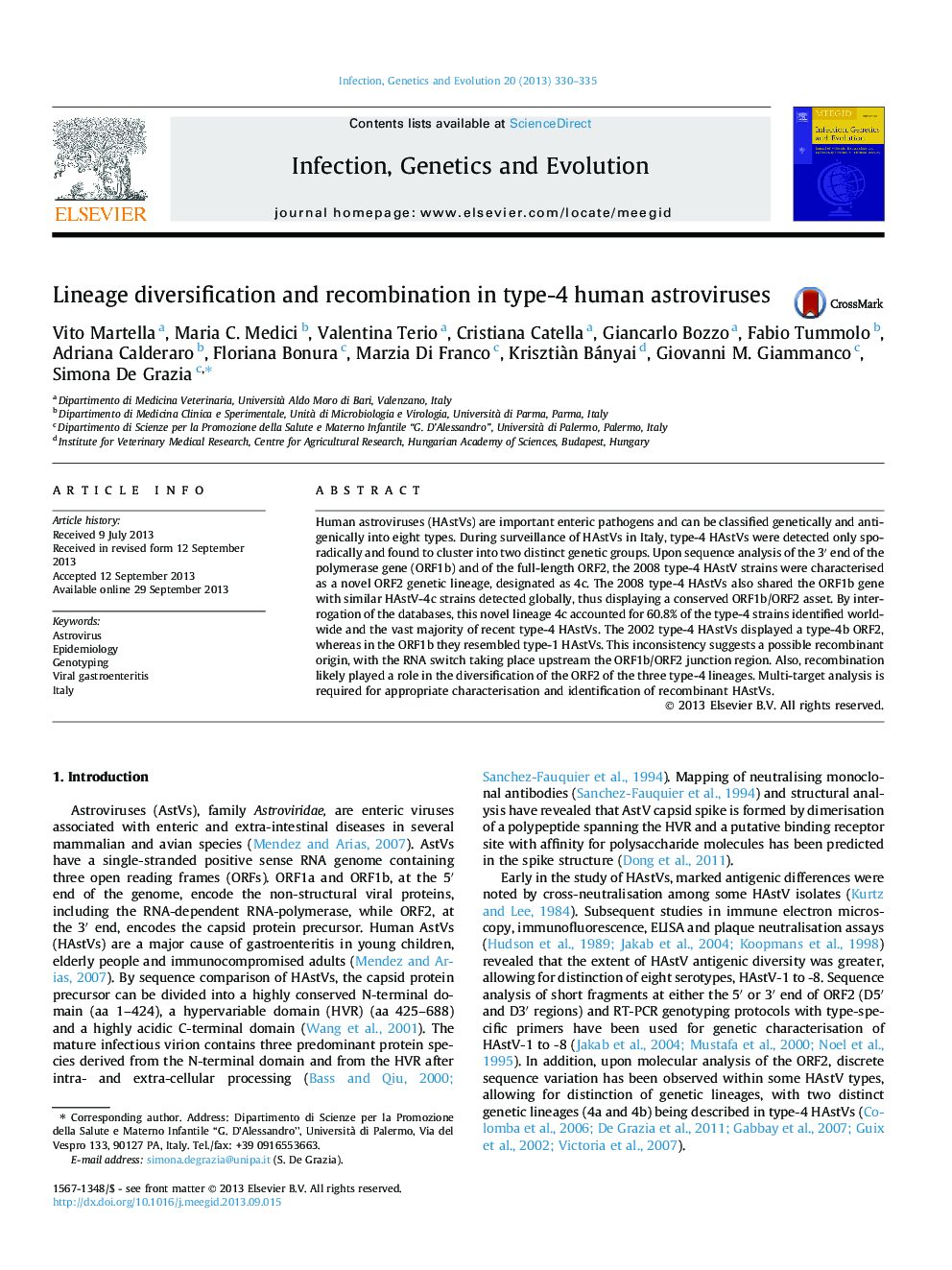| Article ID | Journal | Published Year | Pages | File Type |
|---|---|---|---|---|
| 5910018 | Infection, Genetics and Evolution | 2013 | 6 Pages |
â¢Surveillance for HAstV in Italy identified the circulation of HAstV-4.â¢Italian HAstV-4 strains belong to three distinct genetic lineages (4a-4c).â¢A possible recombination among type-1 and some type-4 HAstVs have been observed.â¢Puzzled pathways of evolution for the various lineages have been observed.
Human astroviruses (HAstVs) are important enteric pathogens and can be classified genetically and antigenically into eight types. During surveillance of HAstVs in Italy, type-4 HAstVs were detected only sporadically and found to cluster into two distinct genetic groups. Upon sequence analysis of the 3â² end of the polymerase gene (ORF1b) and of the full-length ORF2, the 2008 type-4 HAstV strains were characterised as a novel ORF2 genetic lineage, designated as 4c. The 2008 type-4 HAstVs also shared the ORF1b gene with similar HAstV-4c strains detected globally, thus displaying a conserved ORF1b/ORF2 asset. By interrogation of the databases, this novel lineage 4c accounted for 60.8% of the type-4 strains identified worldwide and the vast majority of recent type-4 HAstVs. The 2002 type-4 HAstVs displayed a type-4b ORF2, whereas in the ORF1b they resembled type-1 HAstVs. This inconsistency suggests a possible recombinant origin, with the RNA switch taking place upstream the ORF1b/ORF2 junction region. Also, recombination likely played a role in the diversification of the ORF2 of the three type-4 lineages. Multi-target analysis is required for appropriate characterisation and identification of recombinant HAstVs.
